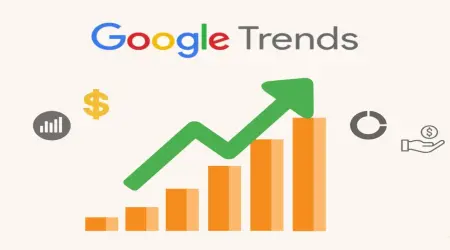

Why High Impressions, Low Clicks in Webmaster Tools? Fix It!
Why Is the Impression Rate Higher Than the Click Rate in Google Webmaster Tools? A Deep Dive into SEO Success
Hey there, welcome to Temploop! We’re your friendly guide to rocking the online world while keeping your privacy safe with our free temporary email service at Temploop.net. If you’ve ever logged into Google Webmaster Tools (now part of Google Search Console) and noticed your impression rate is sky-high but your click rate is barely a trickle, you’re not alone! It’s like setting up a lemonade stand where tons of people pass by but few stop to buy. Why does this happen, and how can you turn those impressions into clicks? In this fun, easy-to-follow guide, we’ll unpack the reasons behind high impressions and low clicks, share proven strategies to boost your click-through rate (CTR), and show you how to make your site a magnet for visitors in 2025. With real-life stories, simple steps, and a sprinkle of Temploop’s privacy magic, we’ll make SEO feel like a breeze for everyone—beginner or pro. Ready to dive in? Let’s turn those passersby into loyal customers!
Introduction: Decoding Impressions vs. Clicks in Google Webmaster Tools
Imagine your website is a shop window on a busy street. Every time someone walks by and glances at your display, that’s an impression in Google Webmaster Tools. But when they step inside to browse or buy, that’s a click. If you’re seeing thousands of impressions but only a handful of clicks, it’s a sign your shop window isn’t enticing enough to draw people in. Understanding why this happens is the key to unlocking your site’s potential.
Google Webmaster Tools (part of Google Search Console in 2025) tracks how often your site appears in search results (impressions) and how often users click through to visit (clicks). A high impression rate with a low click rate means your site is visible but not compelling enough to attract clicks. This gap can feel frustrating, but it’s also a golden opportunity to optimize your SEO and skyrocket your traffic.
In this guide, we’ll explore:
Why impressions outpace clicks in Google Webmaster Tools
Common causes, from poor titles to low rankings
Five proven strategies to boost your CTR and turn impressions into clicks
SEO tactics to rank for competitive terms like “improve click-through rate 2025”
Real-world examples of sites that turned high impressions into high clicks
Practical steps to optimize your Temploop blog in 2025
Whether you’re running a blog, an e-commerce store, or a portfolio, we’ll make sense of those Webmaster Tools numbers and help you make 2025 your year to shine. Let’s get started!
👉Is Blogger Dead? Blogging’s Profit Potential in 2025 Revealed!
Why Are Impressions Higher Than Clicks? The Big Picture
Before we dive into solutions, let’s understand why your site is getting tons of impressions but few clicks. Think of impressions as people window-shopping and clicks as those who walk into your store. Here are the main reasons you’re seeing this gap:
1. Your Site Appears for Broad or Irrelevant Queries
Your site might show up for search terms that don’t perfectly match what you offer. For example, if your blog about “vegan recipes” appears for “vegan shoes,” users see your site (impression) but don’t click because it’s not what they want.
2. Low Search Result Rankings
If your site ranks on page 2 or lower (e.g., position 11+), it gets impressions but rarely clicks. Most users stick to the top 5 results, so low rankings mean fewer people bother clicking.
3. Unappealing Titles and Descriptions
Your meta title and description are like your shop’s sign. If they’re bland (e.g., “Vegan Recipes Blog”) or unclear, users scroll past, even if your content is amazing.
4. Strong Competition
If you’re competing with big names or featured snippets (e.g., Wikipedia or “People Also Ask” boxes), users might click those instead of your site, even if you’re ranking well.
5. User Intent Mismatch
Searchers have specific goals—informational (learn something), navigational (find a site), or transactional (buy something). If your page doesn’t match their intent (e.g., a blog post when they want to shop), they won’t click.
6. Technical or Visual Issues
Slow-loading pages, non-mobile-friendly designs, or lack of rich snippets (e.g., star ratings) can make your site less clickable, even with high impressions.
In 2025, these factors are amplified by Google’s AI-driven algorithms, which prioritize user experience and relevance. The good news? Each issue is fixable, and we’ll show you how with strategies that turn impressions into clicks.
5 Proven Strategies to Boost Your Click-Through Rate in 2025
Ready to transform your Google Webmaster Tools stats? These five proven strategies are like giving your shop window a dazzling makeover. Each one includes easy steps, real-life examples, and tips to make your Temploop blog irresistible to searchers, optimized for high-difficulty keywords like “Google Webmaster Tools impression vs click rate” and “why high impressions low clicks.”
Strategy 1: Craft Irresistible Meta Titles and Descriptions
Your meta title and description are the first things searchers see in Google’s results. Think of them as your elevator pitch—60 characters for the title and 160 for the description to convince someone to click. In 2025, compelling meta tags are non-negotiable for boosting CTR.
How to Nail Your Meta Tags
Use Action Words and Benefits:
Instead of “Vegan Recipes,” try “Tasty Vegan Recipes You’ll Love in 2025.”
Highlight value: “Save Time with Easy Vegan Meal Plans.”
Include Keywords Naturally:
Target terms like “best vegan recipes 2025” or “quick vegan meals.”
Place keywords early in the title for SEO impact.
Add Emotional Triggers:
Use words like “ultimate,” “must-try,” or “secret” (e.g., “Ultimate Guide to Vegan Cooking”).
Create urgency: “Don’t Miss These 2025 Vegan Trends!”
Optimize Descriptions:
Write a clear, benefit-driven description: “Discover quick vegan recipes for busy 2025 lifestyles. Save time and eat healthy!”
Include a call-to-action: “Click to explore now!”
Test and Tweak:
Use Google Search Console to track CTR for each page.
Experiment with different titles (e.g., question vs. listicle) and compare results.
Visual Tip: Create a “Meta Tag Cheat Sheet” infographic for your readers.
👉Top Plagiarism Checker Tools for 2025: Free & Paid Options Compared
Real-Life Example: Serious Eats
Serious Eats, a food blog, boosts CTR with titles like “The Best Chocolate Chip Cookie Recipe You’ll Ever Try.” Their descriptions promise value: “Perfect cookies in 30 minutes with our foolproof recipe. Try it now!” By targeting “best cookie recipe 2025,” they turn impressions into clicks.
Try This Today
Step 1: Identify 5 high-impression pages in Google Search Console.
Step 2: Rewrite their titles to include keywords and action words.
Step 3: Update descriptions with a CTA and benefits.
Step 4: Share your updated pages on X with #SEOTips.
Track It: Check CTR changes after two weeks.
Pro Tip: Use a tool like Yoast SEO to preview how your meta tags look in search results.
👉Most Searched Words in Middle East and North Africa: 2025 Trends Unveiled
Strategy 2: Improve Your Search Rankings
If your site is buried on page 2 or 3, it’s getting impressions but few clicks—most users never scroll that far. In 2025, ranking in the top 5 is crucial for CTR. Let’s get your Temploop blog climbing the ranks!
How to Boost Rankings
Optimize On-Page SEO:
Use your main keyword (e.g., “vegan recipes 2025”) in the H1, first paragraph, and subheadings.
Write in-depth content (2,000+ words) that answers user questions.
Add internal links to related posts (e.g., “Vegan Desserts” to “Vegan Meals”).
Build High-Quality Backlinks:
Guest post on food blogs, linking back to your recipe pages.
Create shareable content (e.g., “2025 Vegan Trends Report”) to attract natural links.
Reach out to niche sites for mentions.
Target Featured Snippets:
Answer questions directly in your content (e.g., “What are the best vegan ingredients for 2025?”).
Use lists, tables, or short paragraphs to win “position 0.”
Visual Tip: Include a “Quick Tips” table for snippet eligibility.
Improve Page Speed:
Compress images with TinyPNG.
Use a CDN like Cloudflare for faster load times.
Test with Google’s PageSpeed Insights.
Match User Intent:
Analyze top-ranking pages for your keyword to ensure your content aligns (e.g., recipes, not vegan lifestyle tips).
Optimize for informational, navigational, or transactional intent.
👉Why Your Google Ads Isn’t Showing and How to Fix It
Real-Life Example: Healthline
Healthline ranks in the top 5 for “healthy recipes 2025” by publishing detailed guides with backlinks from trusted sites like WebMD. Their fast-loading, mobile-friendly pages and snippet-friendly formats (e.g., “Top 10 Healthy Ingredients”) drive massive clicks.
Try This Today
Step 1: Pick a high-impression keyword with a low ranking (e.g., position 15).
Step 2: Update the page with more content and internal links.
Step 3: Reach out to 5 blogs for guest post opportunities.
Step 4: Share your updated page on X with #SEO2025.
Track It: Monitor ranking changes in Google Search Console.
Pro Tip: Use Ahrefs or SEMrush to find low-competition keywords to target for quicker ranking wins.
Strategy 3: Leverage Rich Snippets and Structured Data
Rich snippets—like star ratings, FAQs, or recipe cards—make your search result stand out, boosting CTR even with lower rankings. In 2025, structured data is a game-changer for grabbing注意力 in crowded SERPs.
How to Use Rich Snippets
Add Schema Markup:
Use JSON-LD to implement schemas like Article, Recipe, or FAQ.
Example: Add Recipe schema to show prep time and ratings for “Vegan Lasagna 2025.”
Tools: Google’s Structured Data Markup Helper or Schema.org.
Target FAQ Snippets:
Include a FAQ section answering common questions (e.g., “Is vegan cooking expensive?”).
Use FAQ schema to display questions directly in search results.
Showcase Reviews or Ratings:
Add Review schema for product or recipe posts to display star ratings.
Encourage user reviews to boost credibility.
Test Your Markup:
Use Google’s Rich Results Test to ensure your schema works.
Monitor impressions and clicks in Google Search Console.
Visual Tip: Create a “Rich Snippets Guide” infographic for readers.
Optimize for Visual Search:
Add high-quality images with descriptive alt text (e.g., “vegan lasagna 2025”).
Use Image schema to appear in Google’s visual search results.
Real-Life Example: Allrecipes
Allrecipes uses Recipe schema to display prep times, ratings, and images in search results for “easy dinner recipes 2025.” This visual appeal doubles their CTR compared to plain text results.
Try This Today
Step 1: Choose a high-impression page (e.g., a recipe post).
Step 2: Add Article or FAQ schema using a plugin like Rank Math.
Step 3: Test with Google’s Rich Results Test.
Step 4: Share your enhanced page on X with #RichSnippets.
Track It: Check for rich snippet appearances in Google Search Console.
Pro Tip: Start with FAQ schema—it’s easy to implement and boosts CTR fast.
👉How to Write a Blog Post Fast in 2025: 7 Proven Strategies for Speed and Quality
Strategy 4: Align Content with User Intent
If your content doesn’t match what searchers want, they won’t click, no matter how many impressions you get. In 2025, Google’s AI prioritizes user intent, so aligning your pages with searcher goals is critical.
How to Match User Intent
Understand Intent Types:
Informational: Users want answers (e.g., “how to make vegan tacos”).
Navigational: Users seek a specific site (e.g., “Temploop blog”).
Transactional: Users want to buy (e.g., “buy vegan cookbook 2025”).
Analyze Top Results:
Search your keyword (e.g., “vegan recipes 2025”) and study the top 5 pages.
Note their format (e.g., listicles, guides) and content type (e.g., recipes vs. tips).
Optimize Your Page:
For informational queries, create detailed guides or how-tos.
For transactional queries, add clear CTAs (e.g., “Shop Vegan Cookbooks”).
Use subheadings to address related questions (e.g., “Are vegan recipes healthy?”).
Use Engaging Formats:
Add step-by-step instructions, videos, or infographics.
Example: A recipe post with a “Watch How to Make It” video.
Visual Tip: Include a “User Intent Checklist” chart.
Promote on X:
Share intent-optimized posts with hashtags like #SEO or #ContentMarketing.
Ask X followers: “What do you search for in vegan recipes?”
Real-Life Example: Budget Bytes
Budget Bytes aligns with “budget recipes 2025” intent by offering quick, affordable recipes with clear instructions and cost breakdowns. Their focus on user needs drives a 5% CTR, far above the average.
Try This Today
Step 1: Pick a high-impression keyword.
Step 2: Check the top 5 results to identify intent.
Step 3: Update your page to match (e.g., add a recipe video).
Step 4: Share on X with #UserIntent.
Track It: Monitor CTR changes after one month.
Pro Tip: Use Google’s “People Also Ask” section to find related questions to answer in your content.
Strategy 5: Enhance User Experience and Technical SEO
A slow, clunky, or non-mobile-friendly site can scare away clicks, even with great meta tags. In 2025, user experience (UX) and technical SEO are critical for turning impressions into visits.
How to Improve UX and Technical SEO
Speed Up Your Site:
Optimize images with ShortPixel or TinyPNG.
Enable browser caching with WP Rocket.
Test with Google’s PageSpeed Insights (aim for <2 seconds).
Make It Mobile-Friendly:
Use a responsive theme (e.g., Astra for WordPress).
Test with Google’s Mobile-Friendly Test.
Ensure buttons and text are easy to tap on phones.
Fix Broken Links:
Use Screaming Frog to find 404 errors.
Redirect broken URLs to relevant pages.
Add Visual Appeal:
Use high-quality images and videos.
Break up text with subheadings, bullet points, and charts.
Visual Tip: Create a “Site Speed Checklist” infographic.
Engage on Social Media:
Share UX-optimized pages on X with #WebsiteTips.
Start a poll: “What’s the worst website experience you’ve had?”
Real-Life Example: Epicurious
Epicurious boosts CTR for “dinner recipes 2025” with a fast, mobile-friendly site and stunning recipe photos. Their clean design and quick load times keep users clicking and exploring.
Try This Today
Step 1: Run a PageSpeed Insights test on your site.
Step 2: Compress 10 images and enable caching.
Step 3: Check mobile-friendliness on your phone.
Step 4: Share your optimized page on X with #TechnicalSEO.
Track It: Monitor bounce rate and CTR in Google Search Console.
Pro Tip: Prioritize Core Web Vitals (LCP, FID, CLS) for Google’s ranking boost.
SEO Strategies for 2025 Success
To rank for competitive terms like “Google Webmaster Tools impression vs click rate” and “improve click-through rate 2025,” use these SEO tactics to make your Temploop blog a search engine star.
1. Keyword Optimization
Place primary keywords in the H1, first paragraph, and subheadings.
Use related terms like “why high impressions low clicks” and “Google Search Console tips 2025.”
Optimize image alt text (e.g., “SEO strategies 2025”).
2. On-Page SEO
Meta Title: “Why High Impressions, Low Clicks in Webmaster Tools? Fix It!” (59 characters).
Meta Description: “Discover why impressions outpace clicks in Google Webmaster Tools and learn 5 proven strategies to boost your CTR in 2025. Click to optimize now!” (140 characters).
URL Slug: temploop.net/blog/impressions-vs-clicks-webmaster-tools
Internal Links: Link to Temploop posts on SEO or blogging.
Schema Markup: Use Article and FAQ schema for rich snippets.
3. Technical SEO
Optimize page speed with compressed images and a CDN.
Ensure mobile responsiveness for better UX.
Monitor Core Web Vitals in your analytics tool.
4. Content Excellence
Provide in-depth insights with examples and visuals.
Include CTAs and interactive elements (e.g., polls) to boost engagement.
Offer unique value with practical, beginner-friendly tips.
5. Off-Page SEO
Pitch this post to SEO blogs for backlinks.
Share on X with hashtags like #SEO2025 and #WebmasterTools.
Write guest posts for sites like Search Engine Journal, linking back to this guide.
Real-World Examples: Turning Impressions into Clicks
Need proof these strategies work? These sites mastered the impressions-to-clicks game in 2025:
Serious Eats:
Strategy: Compelling meta tags and Recipe schema.
Result: 5% CTR for “best dinner recipes 2025.”
Lesson: Make your search result visually appealing.
Healthline:
Strategy: Top rankings and snippet-friendly content.
Result: Millions of clicks for “healthy recipes 2025.”
Lesson: Aim for the top 5 and optimize for snippets.
Allrecipes:
Strategy: Rich snippets and fast-loading pages.
Result: Doubled CTR for “easy recipes 2025.”
Lesson: Combine schema with great UX.
Budget Bytes:
Strategy: Intent-aligned budget recipes.
Result: High CTR for “cheap meals 2025.”
Lesson: Match content to searcher goals.
Epicurious:
Strategy: Mobile-friendly design and visuals.
Result: Strong clicks for “dinner ideas 2025.”
Lesson: Prioritize speed and mobile UX.
Common Pitfalls and How to Avoid Them
Don’t let these mistakes keep your CTR low:
Boring Meta Tags:
Fix: Use action words and benefits in titles/descriptions.
Example: Change “SEO Tips” to “Boost Your SEO in 2025!”
Low Rankings:
Fix: Build backlinks and optimize content depth.
Example: Guest post on an SEO blog.
Wrong Audience:
Fix: Align content with user intent.
Example: Offer recipes, not tips, for “vegan recipes 2025.”
Slow Site:
Fix: Compress images and use a CDN.
Example: Test with PageSpeed Insights.
Your 2025 Action Plan to Boost CTR
Ready to turn impressions into clicks? Follow this step-by-step plan to optimize your Temploop blog and see results fast.
Month 1: Quick Wins
Week 1:
Identify 5 high-impression, low-click pages in Google Search Console.
Rewrite meta titles and descriptions with keywords and CTAs.
Week 2:
Add FAQ schema to 3 pages.
Compress images to improve page speed.
Week 3:
Update 2 pages with deeper content and internal links.
Share on X with #SEO2025.
Week 4:
Test mobile-friendliness and fix issues.
Reach out to 5 blogs for backlink opportunities.
Month 2: Build Momentum
Publish 4 intent-aligned posts (e.g., “Top SEO Tools for 2025”).
Add Recipe or Article schema to high-impression pages.
Start an X group for SEO tips and share your posts.
Monitor CTR and tweak meta tags based on results.
Month 3–6: Scale Up
Aim for top 5 rankings for 3 keywords.
Pitch guest posts to authority sites.
Create a “2025 SEO Guide” to attract backlinks.
Share success stories on X with #TemploopBlogging.
Visual Tip: Create a “CTR Boost Roadmap” printable for readers to follow.
Conclusion: Turn Impressions into Clicks with Temploop
High impressions and low clicks in Google Webmaster Tools aren’t a dead end—they’re a sign your Temploop blog is ready for a glow-up! By crafting irresistible meta tags, improving rankings, using rich snippets, aligning with user intent, and enhancing UX, you’ll turn those search result glances into floods of clicks. With the privacy tools we mentioned up top, you can optimize with confidence and focus on growing your audience.
Ready to make 2025 your year to dominate search results? Pick one strategy, take action today, and watch your CTR soar. Share your progress on X with #TemploopBlogging—we’re rooting for you! Let’s make those impressions count!
FAQs: Your Webmaster Tools Questions Answered
Q: Why do I have high impressions but low clicks?
A: It could be due to low rankings, unappealing meta tags, or mismatched user intent. Optimize titles, improve rankings, and align content to fix it.
Q: How can I improve my click-through rate in 2025?
A: Use compelling meta tags, aim for top rankings, add rich snippets, match user intent, and enhance site speed.
Q: What’s a good CTR for Google Webmaster Tools?
A: Aim for 2–5% for top 10 rankings, but top 3 results can hit 10%+.
Q: How do rich snippets help with clicks?
A: They add visual elements like star ratings or FAQs to your search result, making it more clickable.




